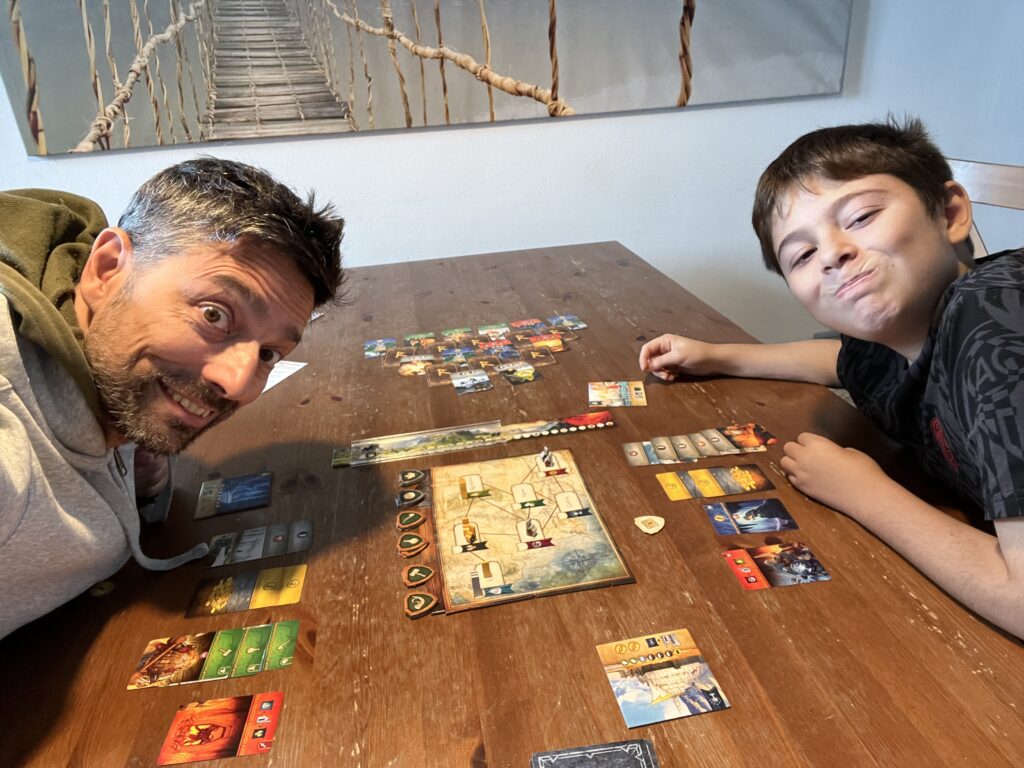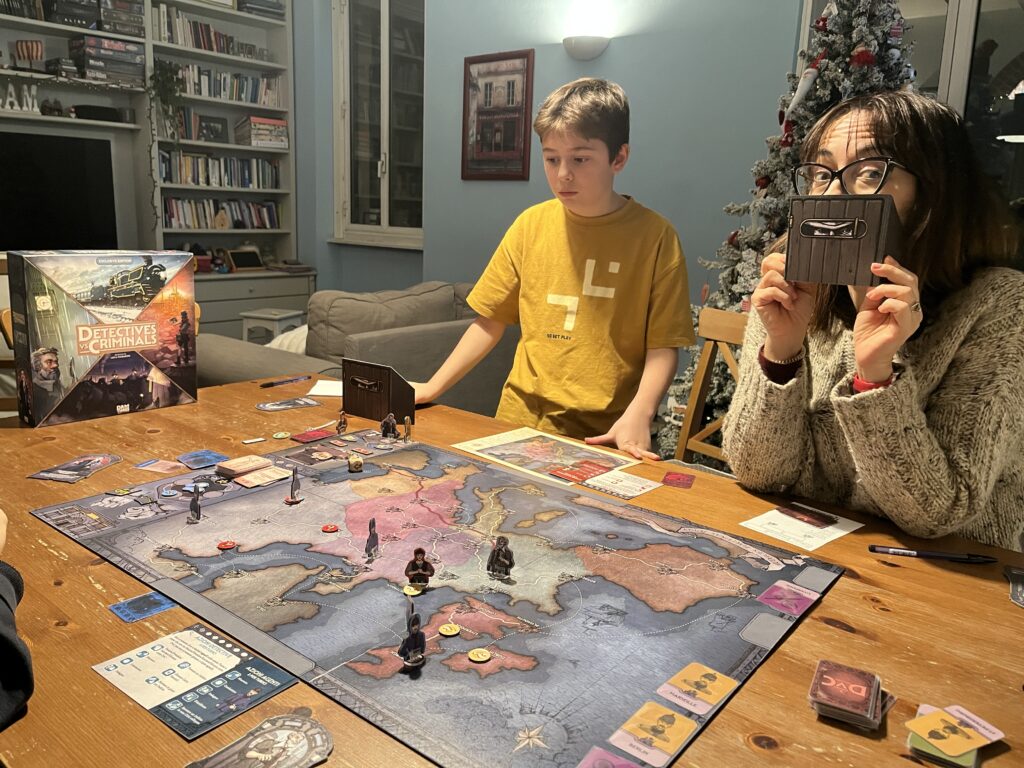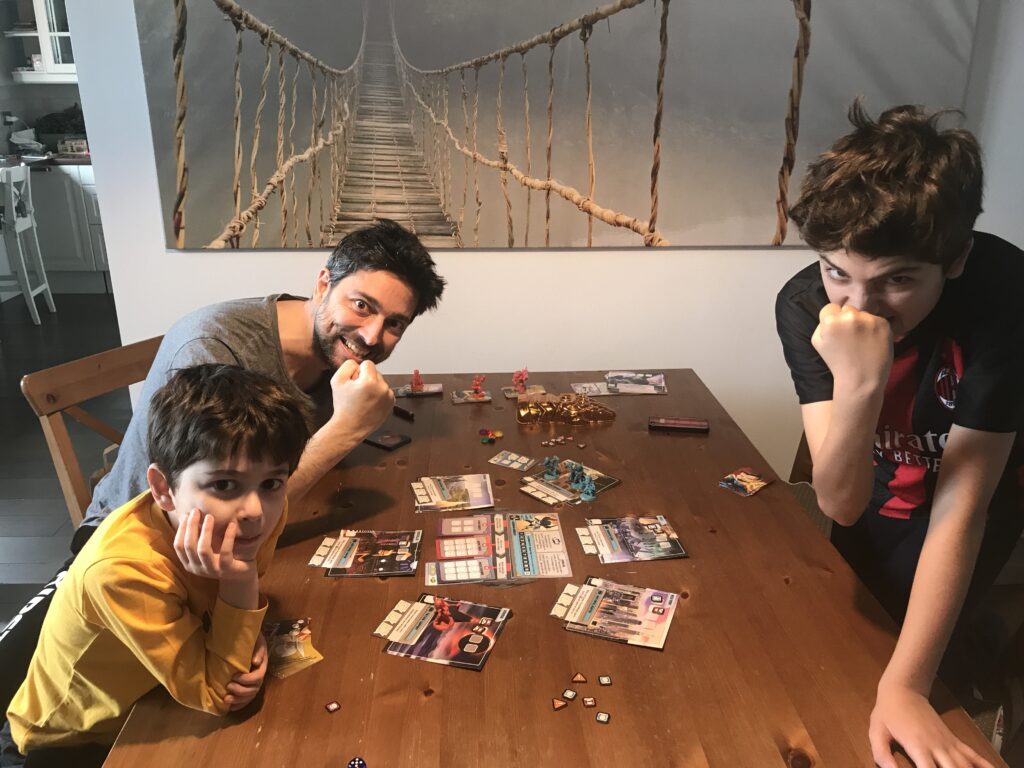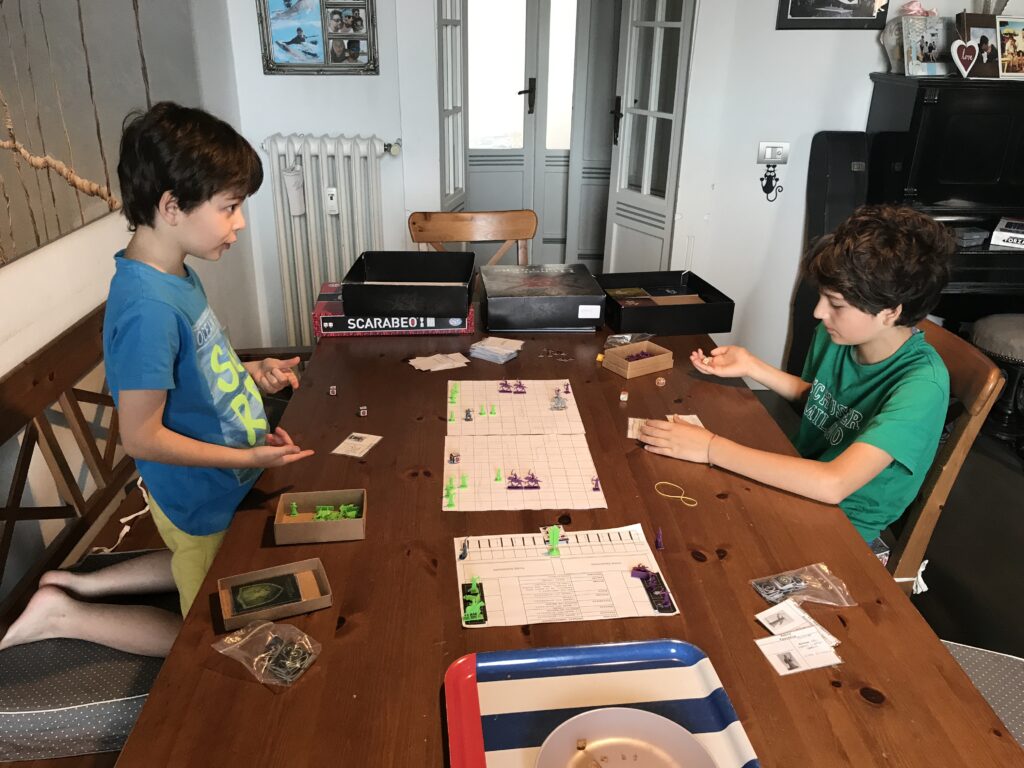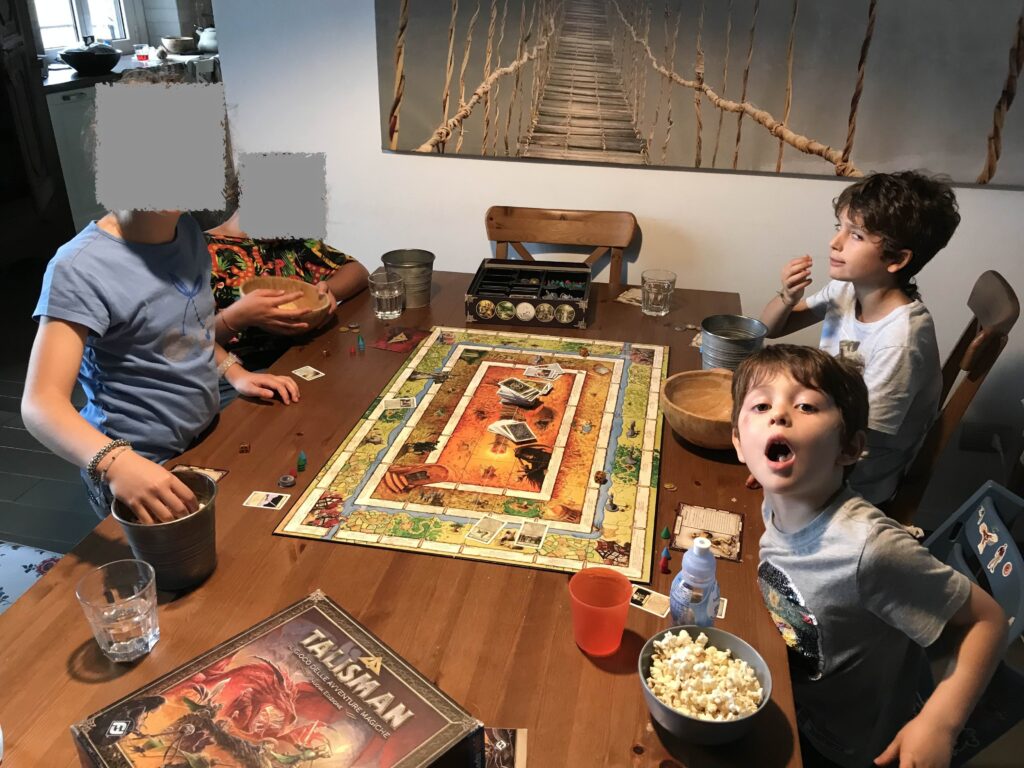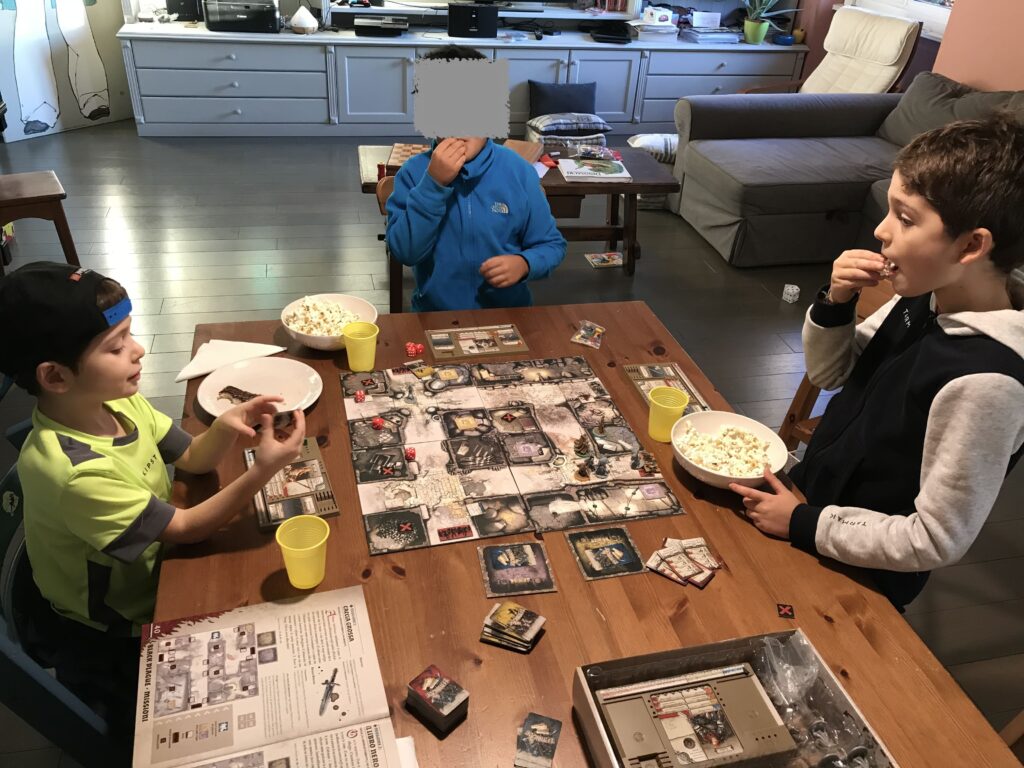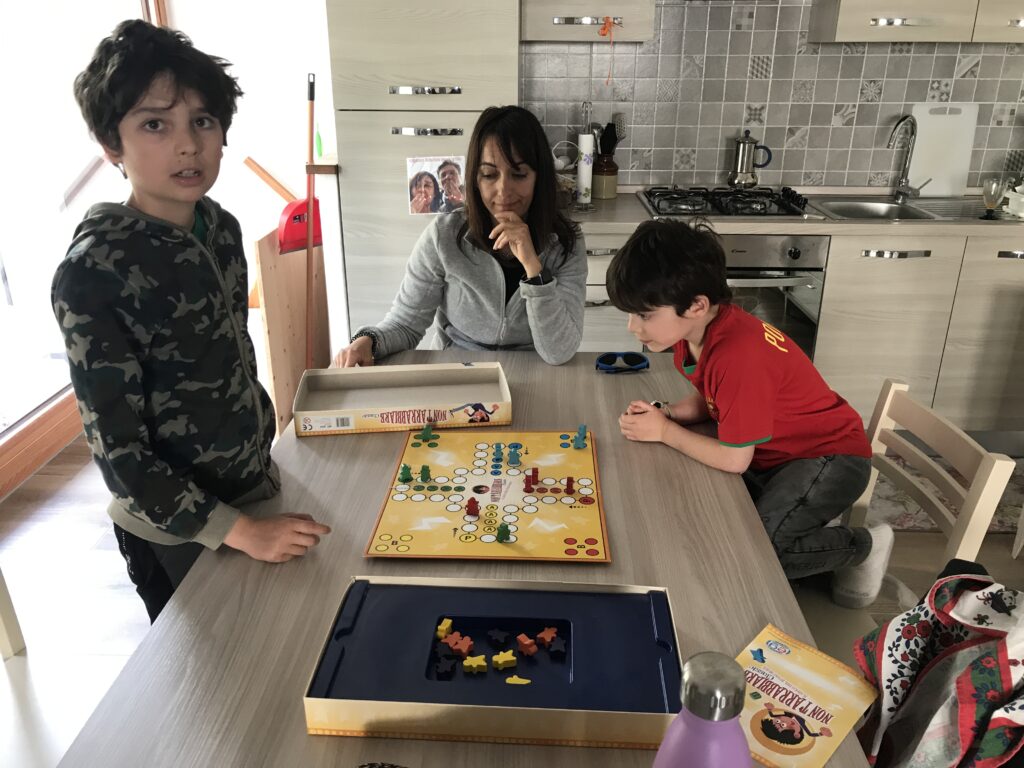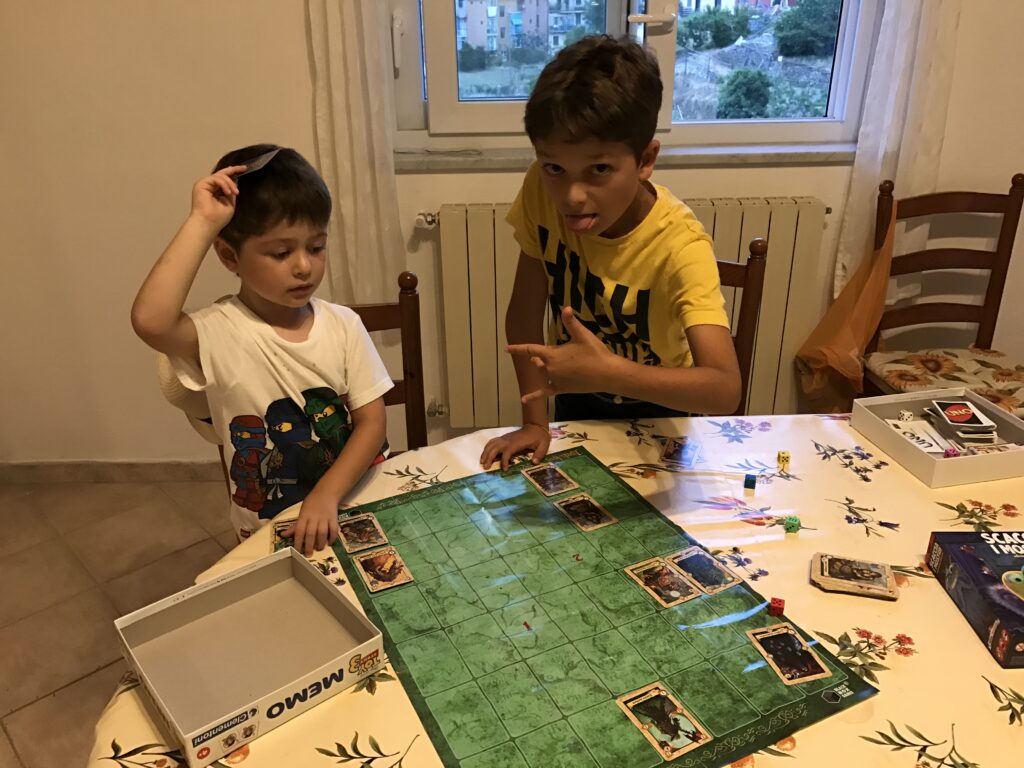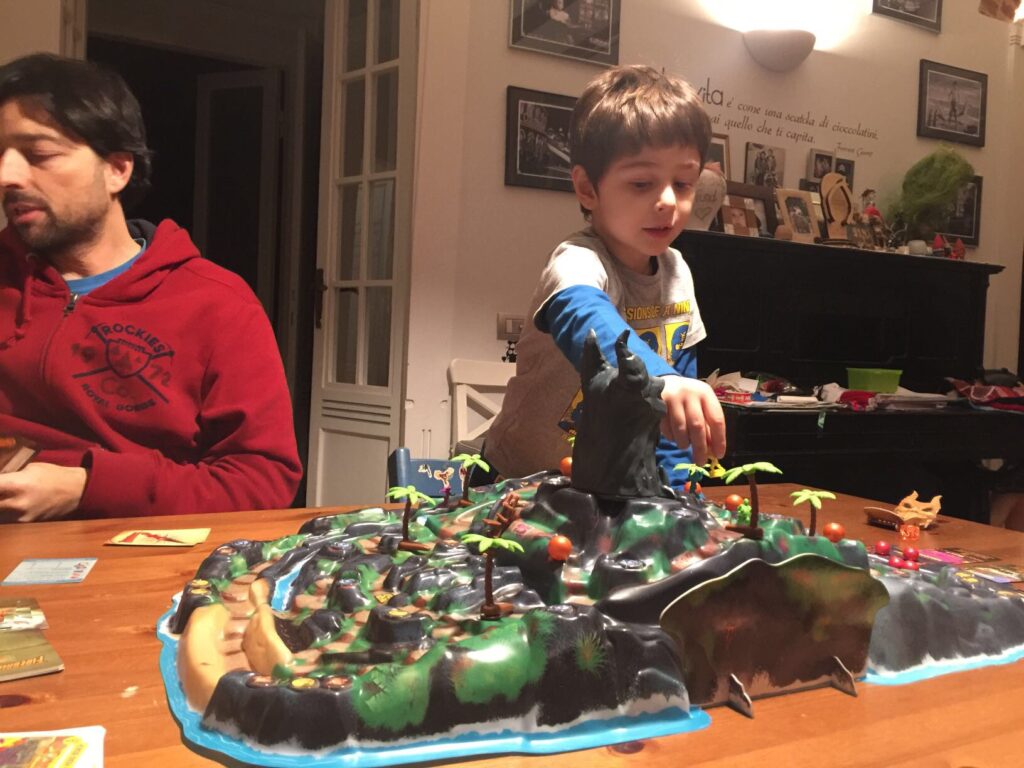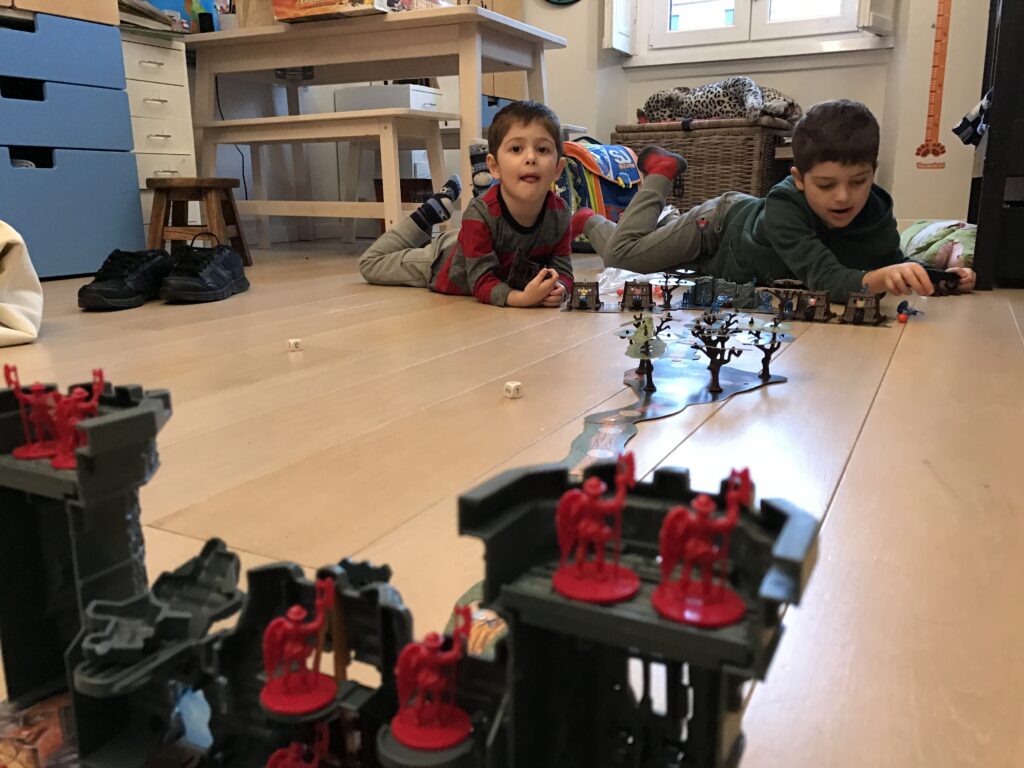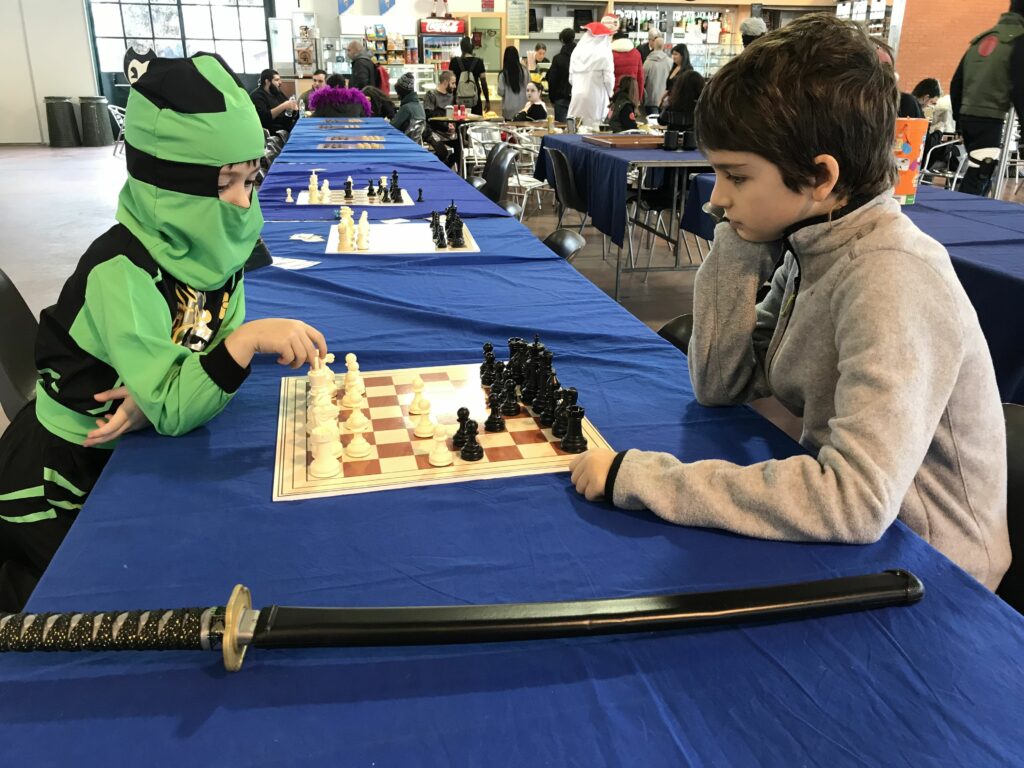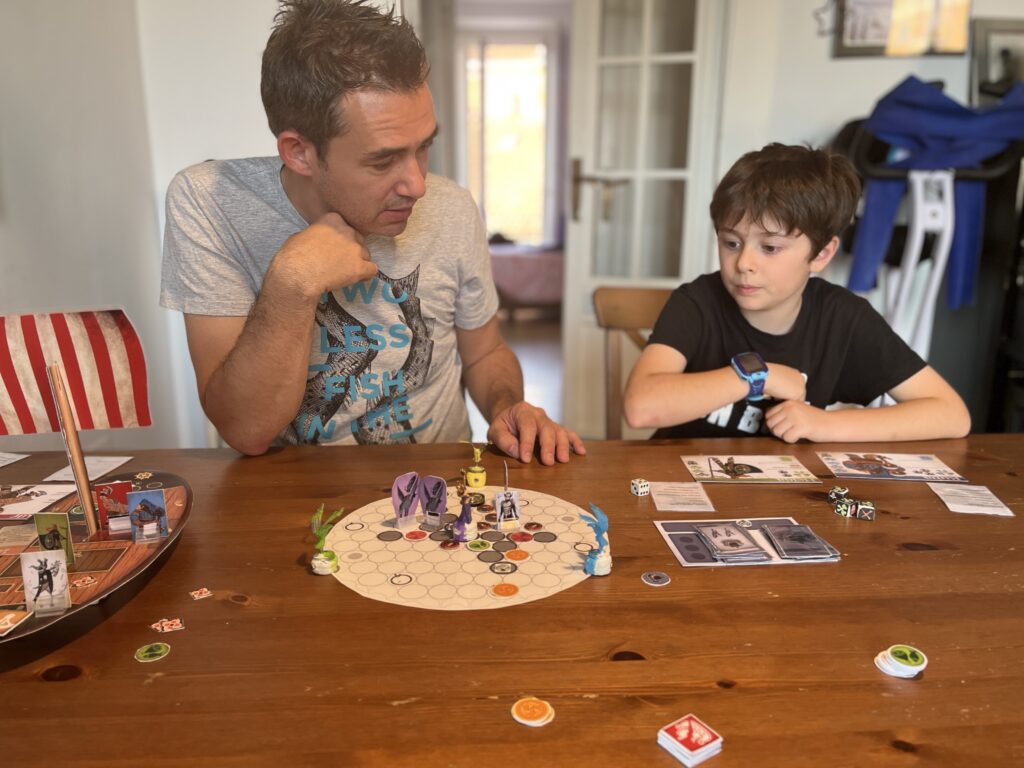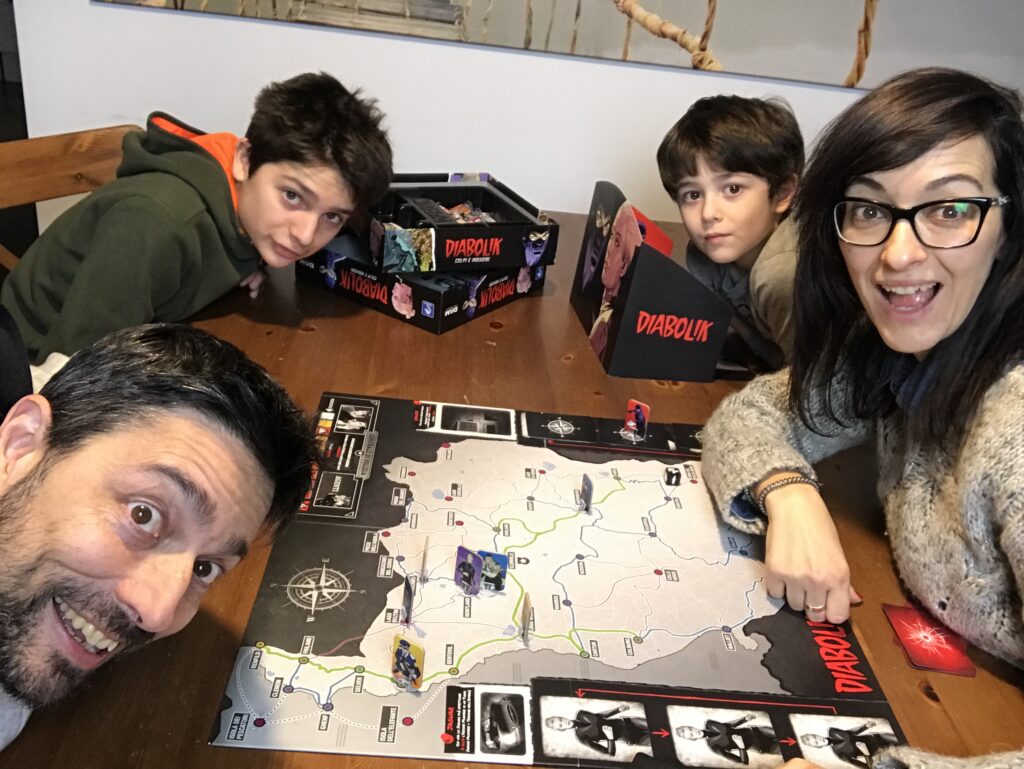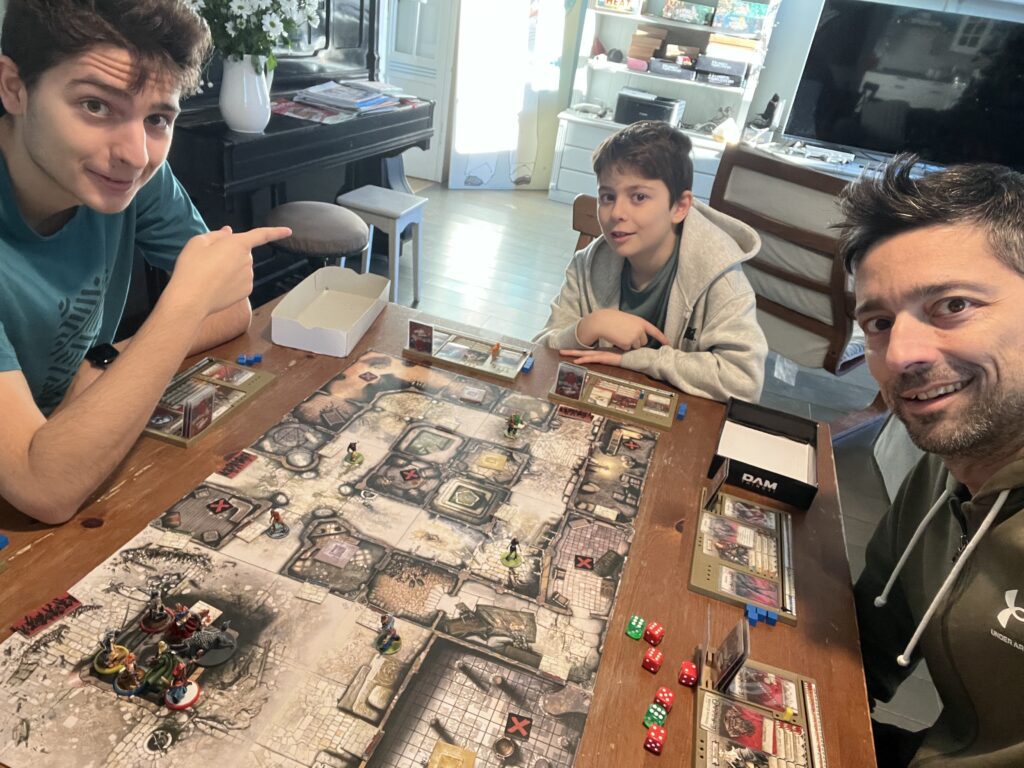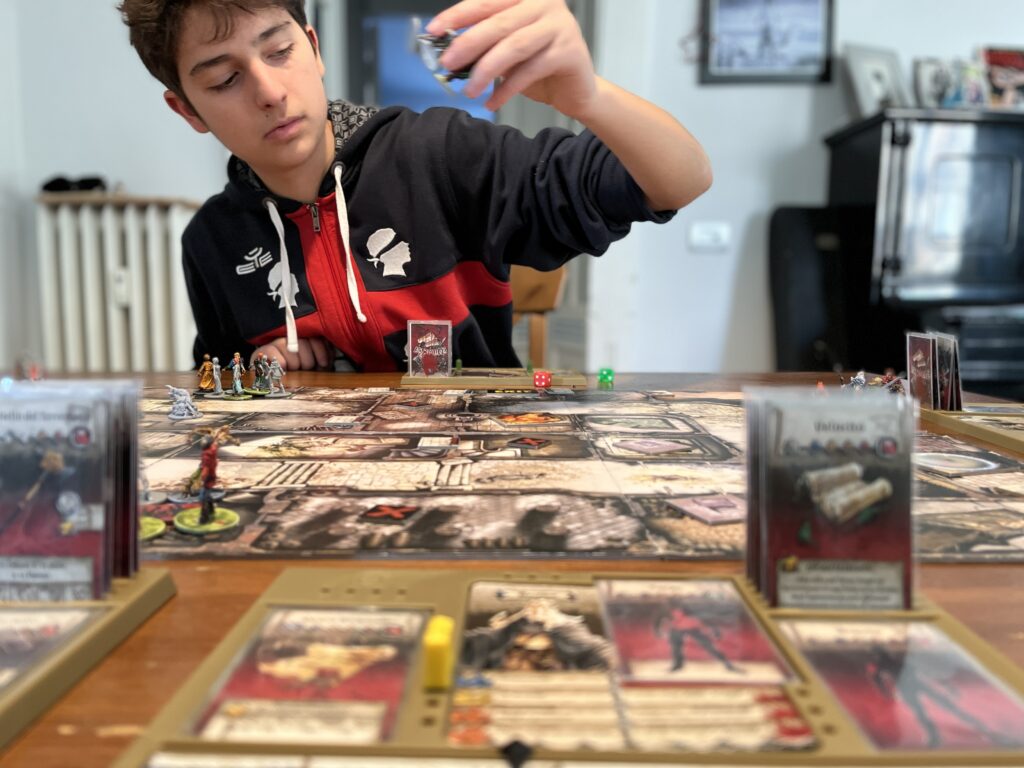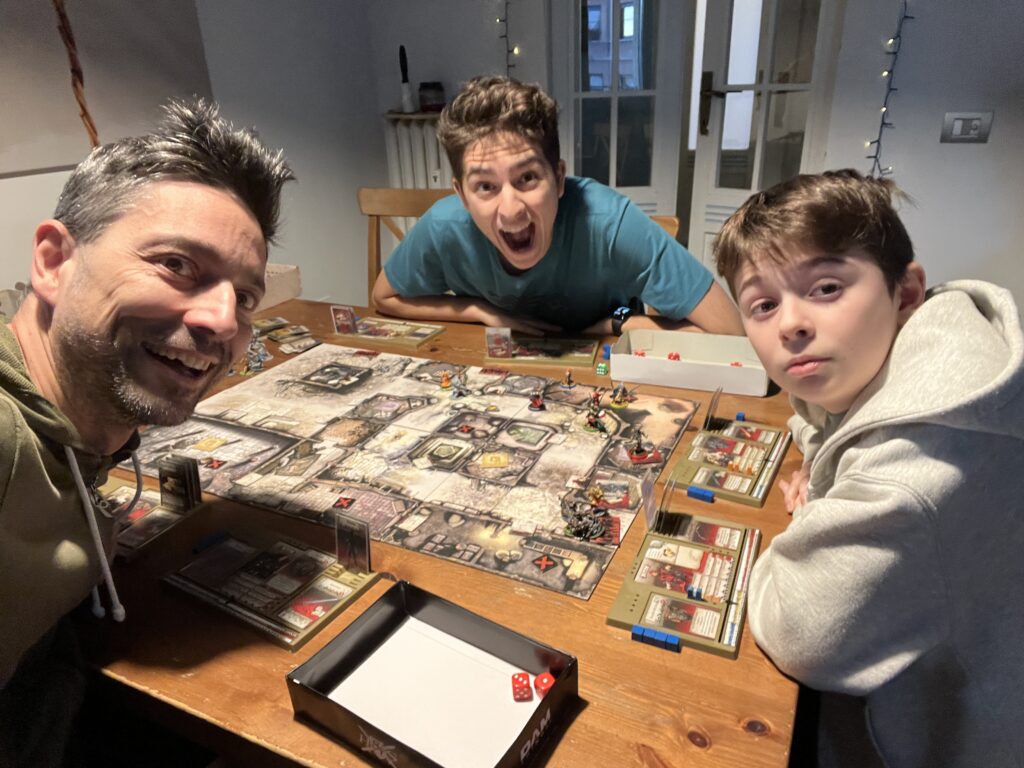by Luca Maragno
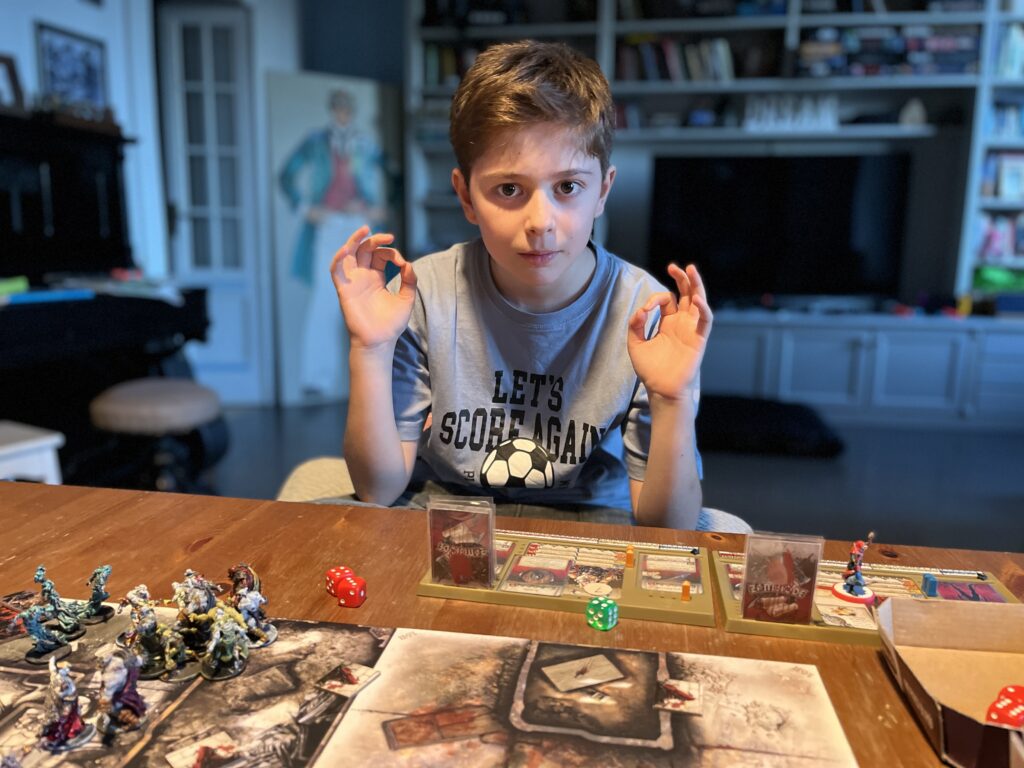
Board games and kids. A wonderful combo. And also a total nightmare. My sons—Marco and Alessandro—are now 12 and 16, and it’s honestly amazing to share this passion with them. But it wasn’t always like that. Totally my fault, of course. I’ve got this dumb competitive fire in me—the kind that makes you celebrate like you just won the Olympics… after beating a six-year-old at arm wrestling. No mercy.
Plus, I’m a nerd and a game designer, which means I’m also annoyingly picky about game quality.
When they’re really little — up to around six — you end up trying a bunch of games that, as a dad, make you want to hang yourself. But hey, they’re having fun, and they’re getting used to the mechanics, so it’s a sacrifice you can live with.
Sometimes you throw in a house rule or two, just to make things a bit more interesting. Just to loosen the noose a little.
To give you an idea: Marco’s favorite was Woolfy, with those adorable little figures of the wolf and the three pigs. Cute, yes, but let’s just say I wasn’t exactly trembling with fear every time the wolf blew down another house.
Things start to get more interesting in elementary school. You even try the “educational” route, like using Formule Dé to teach them basic math. But they’re still young, and there’s one huge issue: competitive games just don’t work. I mean, you can try… but if they lose, they fall apart because they don’t know how to handle failure yet.
Sure, you could let them win, if you’re not a jerk like me. But let’s be honest: boring, boring, boring.
Still, there are those golden moments when you get to play as a family and actually have fun: Ludo, Hotel, Jamaica, Pandemic, and so on.
From around age 8, Marco and I even played through the entire Legends of Andor campaign, so yeah, that’s when things started getting pretty serious.
When the older one hits middle school, it’s like unlocking another upgrade. They start playing on their own. Serious stuff like Thanos Rising. You watch them go through yet another game, hyped about recruiting superheroes, and you feel genuinely proud. You did it. Except… new problems show up: their friends. And, worse, their friends’ parents. Because after all the cultural groundwork you’ve laid, your kids are now pretty confident around board games. You know you could hand them almost any game and they’d handle it with ease. Their friends? Not so much.
Poor souls, most of them didn’t have the luck of growing up with parents who shared a love for board games. They kind of know what board games are, vaguely. When you explain the rules, they look lost, confused, start fiddling with random components, by the time they’re ready to start, my kids have already shot themselves in the foot.
Then, of course, they get excited, their minds are blown, and they want to play again. Great.
Except sometimes they come back… with their parents. Who, without fail, have only ever played Monopoly, Risk, and Clue and for them, that’s the entire board game universe. A three-box horizon. They really struggle with new mechanics. One of them, in particular, drove me absolutely nuts. To protect the innocent, let’s just call her Mother Goose.
We try Pandemic.
“Oh, but where’s the die? How do you move then?”
“There are Actions,” I say. It’s not that hard… or so I foolishly think.
Then her turn comes: “Where’s the die? I want to move.
“There’s no die in this game.” Next turn:
“Can you pass me the die? I want to move to Rome.”
Again, with infinite patience: “There is no die. You can move by spending an action.”
And yet: “If I roll a 6, can I get to London?” At that point, I grab my emergency bag of dice, leap across the table, shove Mother Goose to the floor, and make her swallow every single die in the bag—including the giant d20 that’s the size of a wristwatch.
Then I snap back from this idyllic vision and calmly reply: “There are no dice in this game, but you can totally go to Milan if you want just use your actions.”
Never in my life have I rooted harder for the viruses to wipe out humanity.
In the end, she liked it so much she asked to come back for another game. Shit, I start thinking of excuses. I can’t go through this again. But hey, maybe I should treat it as a challenge. These are games, if people struggle, maybe part of the blame is on me. Besides, this time I’ve got an ace up my sleeve. I suggest Talisman. Dear Mother Goose, now you have to roll the damn die to move. It felt like the perfect plan. But I didn’t account for one thing.
“I rolled a 3 and landed in the forest with the monster, so unlucky.”
“Well… you could’ve gone the other way.”
Next turn: “Ugh, a 4, look where I ended up, just my luck.”
“You know you’re not forced to move clockwise, right? You can choose.”
Yeah… you get the idea.
Let’s be clear: around here we also have a blast with video games, comics, movies, and football—both playing and supporting. But for us, board games have a special kind of magic. Sure, for me it’s also work. But I think my kids love them because it’s not just about sharing a story and commenting on it together, like with a TV show, a movie, or any other story-driven medium. And maybe it’s also because it’s not about interacting in a virtual, otherworldly space-time like in video games.
Board games are often challenges. They’re shared experiences, built together. In real life, in the here and now of our bodies. With deep cognitive engagement. And often, emotional too.
There’s no doubt that board games teach a lot of valuable lessons—and as a dad, I couldn’t be happier about that: taking turns, communication, teamwork, strategic thinking, emotional regulation, problem solving, empathy, and so on. But their “educational value” isn’t what makes them truly interesting. Not for me.
Let me explain. Our favorite game is Zombicide. We play the fantasy version with so many home rules it’s basically a completely different game by now. Marco always plays Silas the archer and Asim the assassin. Ale goes for Samson the dwarf and Doran the wizard. I take Baldric—our not-so-subtle Gandalf knockoff—and Clovis the knight. We’re in an endless campaign. We’ve played dozens of missions, sunk hundreds of hours into it.
Plato was right: “You can discover more about a person in an hour of play than in a year of conversation.” Because we really got to know each other. Each of us with our quirks. Ale dropping the dice on the floor—again. Marco stopping everything to explain his complex (and totally insane) plan. Ale bursting into tears —like the family cat just died-because he broke a rare weapon. Marco taking turns all on his own without checking in with anyone and constantly getting himself into trouble. And me, losing it over one wrong move.
We learn to tease each other. To laugh and joke together. To get angry, too. And of course, to celebrate. We learn how to win and how to fail. And to try again. Not to give up. We experience something epic.
Yes, epic—because when it’s midnight and the house echoes with wild cheers like Italy just won the World Cup, and their mom walks in with a baffled “Are you all insane?!?”, how do you explain that we’d spent the last two hours in a hopeless situation—wounded, stuck with crappy weapons, surrounded by endless waves of enemies—and that our plan, our one shot, the one that made us all raise a finger and lock eyes like Doctor Strange, that crazy plan actually worked? How do you explain that we survived—and won? You can’t. You have to live it.
And maybe that’s how it is with passions like board games when you try to explain them to someone who doesn’t play: You can’t explain them. You have to live them. Because in the end, it’s not about dice, miniatures, or game boards. It’s about people. And emotions.

